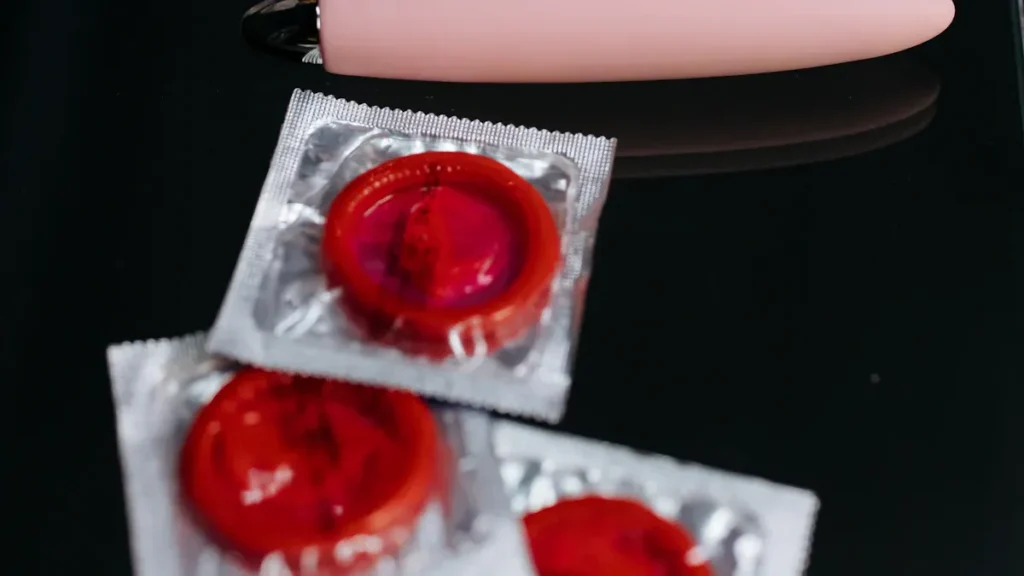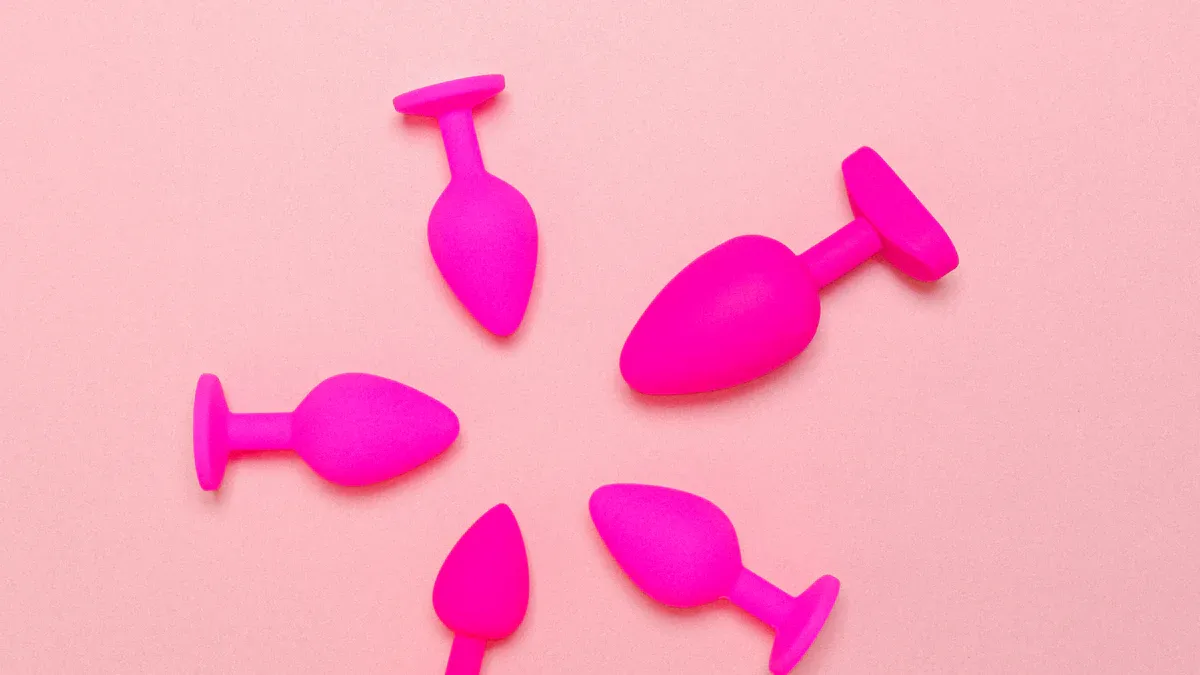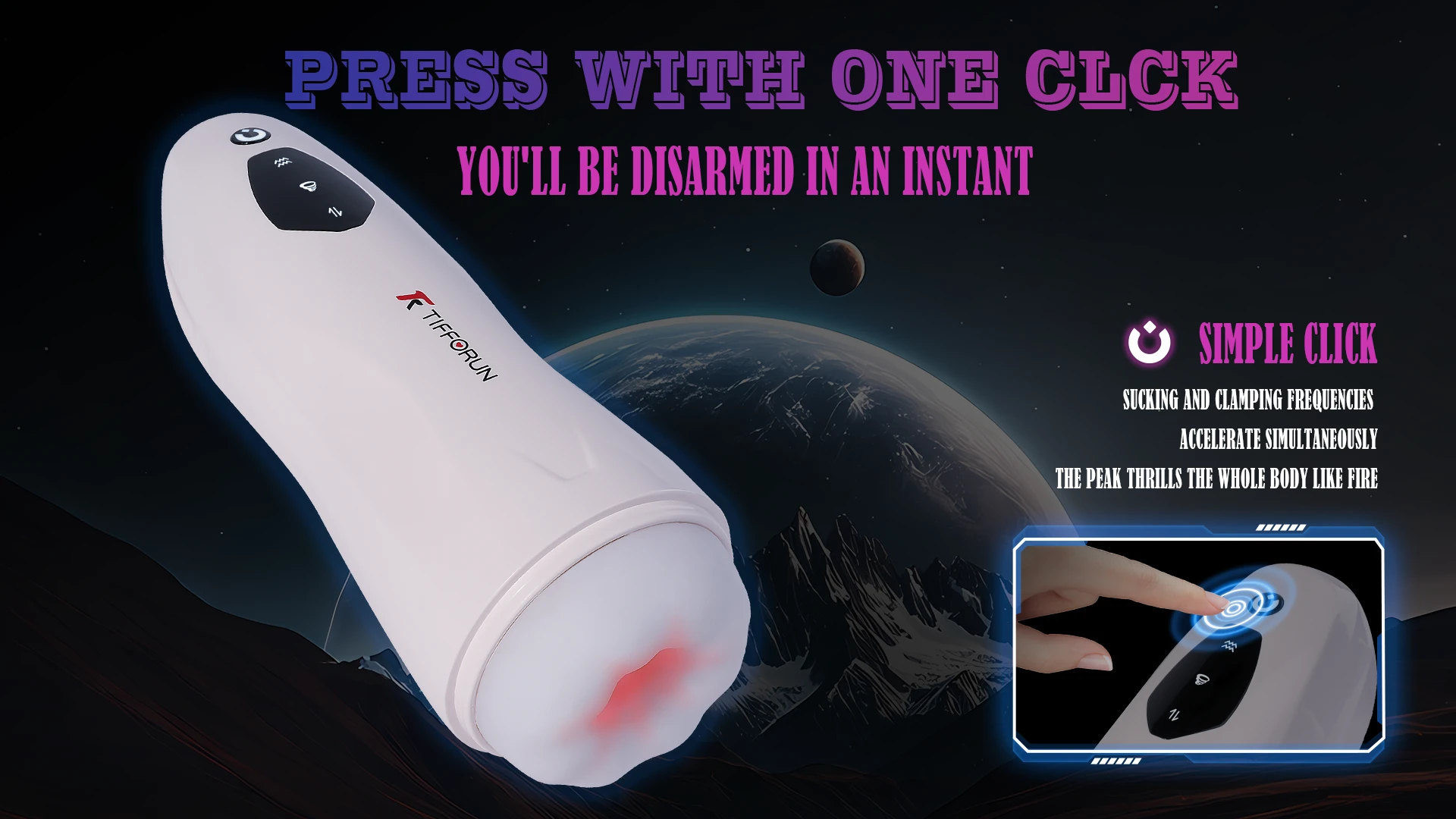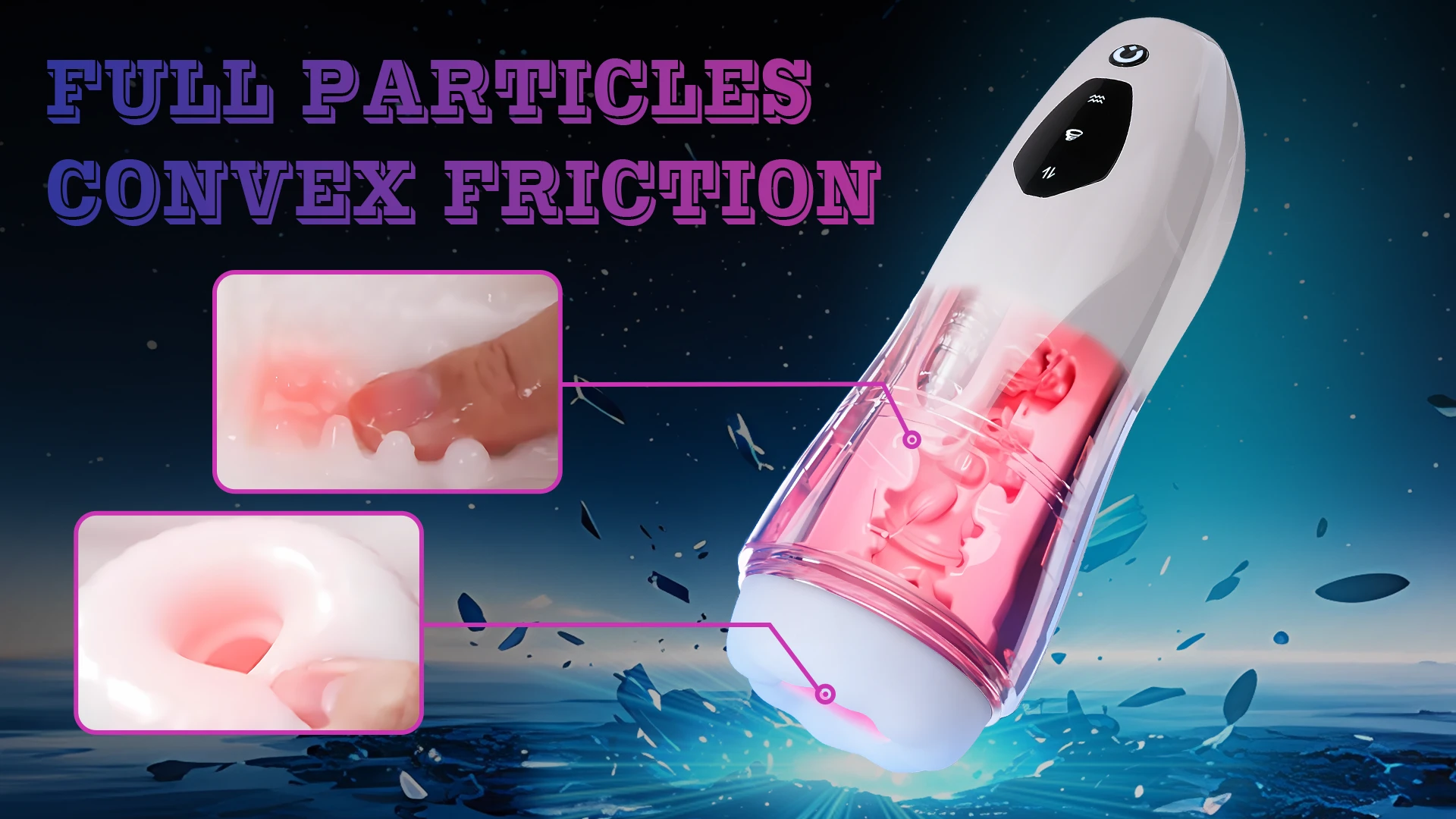Are PVC Dildos Hiding Harmful Chemicals
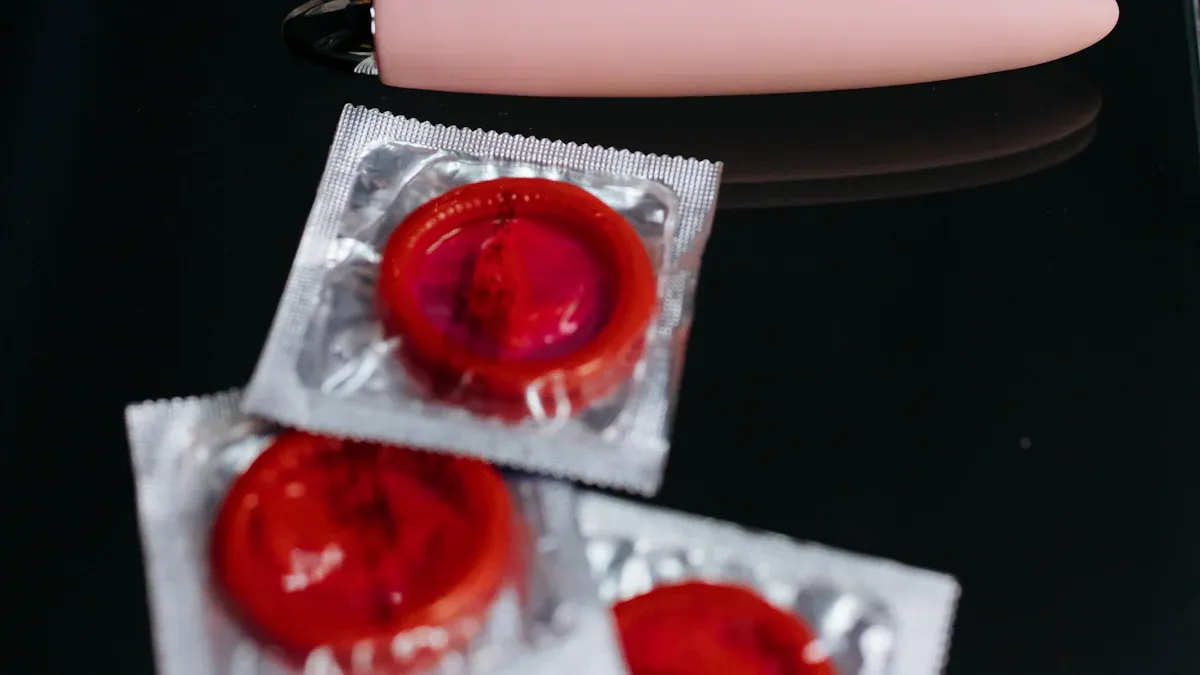
When I first heard about PVC dildos, I was shocked. These toys can have chemicals called phthalates that may harm health. Phthalates are linked to cancer and problems with having children. The U.S. Consumer Product Safety Commission knows about these risks. However, sex toys are not as strictly checked as other products. Some PVC toys, like Dildo Swords or Dinosaur Dildos, have more phthalates than allowed in kids’ toys. This lack of rules makes safety a big concern. Learning about materials in Dildos For Men and other toys helps us stay healthy.
What Is PVC and Why Is It Used in Sex Toys?
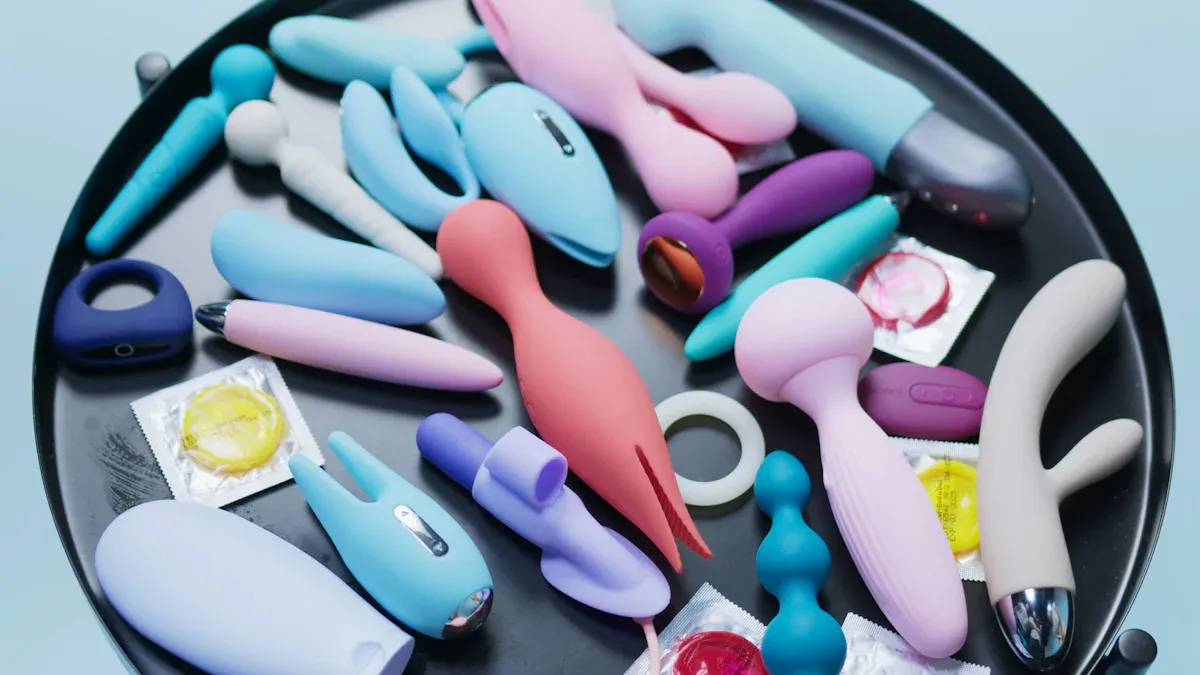
Understanding PVC as a Material
PVC stands for polyvinyl chloride, a type of plastic. It is made by mixing chemicals to create a strong and bendable material. PVC can be shaped into many things, which makes it popular. It lasts a long time and doesn’t wear out easily. To make PVC softer, manufacturers add chemicals called plasticizers. These additives can sometimes bring harmful substances into the material.
Why PVC Is Common in Sex Toys
PVC is often used in sex toys because it works well for both makers and buyers. Many people want cheaper options, and PVC helps keep costs low. Companies use it to make toys that are affordable and still useful. PVC is flexible, so it’s easy to make toys in different shapes and textures. Even though it’s popular, some people choose other materials for better quality and feel.
Cost and Flexibility Advantages of PVC
PVC is cheap, which is one of its best features. This helps companies make products that don’t cost too much. Many buyers look for affordable choices, and PVC fits their needs. PVC is also very bendable and strong, so it doesn’t break easily. It’s even used in medical tools because it’s stable and lasts a long time. These traits make PVC a smart choice for many uses, including sex toys.
Harmful Chemicals in PVC Dildos
Phthalates and Their Role in PVC
I was surprised to learn how common phthalates are in PVC. These chemicals make PVC soft and flexible for use in products. Manufacturers use them to create durable and textured sex toys. But there’s a downside to this convenience. Phthalates don’t stay trapped in the material. They can leak out over time, especially with heat or moisture.
I checked research studies to see how widespread phthalates are. Here’s what I found:
Study Description | Findings |
|---|---|
2009 Study | PVC flooring linked to higher asthma rates. |
2008 Study | Phthalates in dust tied to wheezing in kids; PVC flooring increased respiratory issues. |
Study of 10,851 children | Moisture and PVC flooring raised asthma risks. |
Geriatric hospitals study | Asthma more common in places with PVC flooring breakdown. |
Office building study | Workers had 9 times higher asthma rates due to PVC flooring. |
Plastic wall covering study | Adults with plastic wall coverings had double the asthma risk. |
2013 Study | Kids with vinyl bedroom floors were 1.5 times more likely to have asthma; risk doubled if mothers had vinyl floors during pregnancy. |
2014 Study | Higher BBzP and DnBP exposure in mothers raised kids’ asthma risk by 72% and 78%. |
These studies show how phthalates harm indoor air and health. Though these focus on flooring, PVC dildos carry similar risks.
Health Risks Linked to Phthalates
Phthalates can harm health in serious ways. They mess with hormones, causing problems with growth and reproduction. For example, they’ve been linked to lower fertility and child development issues.
One study found DEHP, a common phthalate, in house dust. It can be inhaled as tiny particles, affecting health indirectly. Here’s what the data shows:
Study | Findings |
|---|---|
Øie et al. (1997) | DEHP is common in house dust; inhaling it is a major exposure route. |
Bornehag et al. (2004b) | Average DEHP in house dust was 0.770 mg/g. |
Adibi et al. (2003) | DEHP in air samples ranged from 0.05–0.41 μg/m3 in New York and 0.08–1.1 μg/m3 in Krakow. |
Nielsen et al. (1989) | DEHP levels in PVC factories ranged from 20 to 2,000 μg/m3. |
These studies show phthalates enter the body through breathing, eating, or skin contact. PVC dildos are porous, so chemicals can easily transfer to the skin. Choosing phthalate-free toys is safer.
Other Toxic Additives in PVC
Phthalates aren’t the only harmful chemicals in PVC dildos. Other additives, like BPA and PBDEs, are also dangerous. These chemicals can disrupt hormones and harm growth and reproduction.
Here’s what I learned about these additives:
BPA can mess with hormones, causing fertility and growth problems.
PBDEs, used to prevent fires, may cause brain delays and thyroid issues.
Studies show these chemicals are risky, even if human data is limited.
These risks show PVC dildos are unsafe beyond just phthalates. Safer materials are always a better choice.
Porous Nature of PVC and Its Risks
Why Porous Materials Are Unsafe
PVC has tiny holes that trap bacteria and moisture. These holes make cleaning hard and let germs grow. Over time, the material breaks down and gets rough. Rough surfaces can irritate the skin during use.
Studies show bacteria damage porous PVC over time:
Study Reference | Weight Loss (%) | Duration | Microorganisms Involved |
|---|---|---|---|
Mersiowsky et al., 2001 | 3–14% | 28 months | Bacteria from waste fermentation |
Webb et al., 2000 | 1.8–6.8% | 6 weeks | 20 types of fungi |
Giacomucci et al., 2019 | 13–19% | 30 days | Pseudomonas citronellolis |
Giacomucci et al., 2020 | 2–13% | 24 months | Marine bacteria samples |
These studies show PVC gets weaker and riskier for users.
Bacteria Growth and Infection Risks
Bacteria grow easily on porous PVC surfaces. This growth makes the material rough and unsafe. PVC films lose up to 33% of their weight due to bacteria. Damaged surfaces help bacteria multiply faster.
Using porous toys can lead to infections. Bacteria stuck in the material can irritate the skin or cause health problems. Cleaning doesn’t remove all germs, making hygiene a big issue.
Problems Cleaning PVC Dildos
Cleaning porous PVC toys is very hard. Tiny holes trap bacteria, even after washing. This raises the risk of infections and skin irritation.
Porous materials soak up moisture, helping bacteria grow. Over time, this causes bad smells and weakens the toy. Choosing non-porous materials like silicone or glass is safer and easier to clean.
Sex Toy Materials to Avoid
PVC and Chlorinated Compounds
PVC and chlorinated compounds are some of the riskiest materials. They can harm health because they contain toxic chemicals. Studies show PVC often has harmful additives like phthalates and chlorinated paraffins. These chemicals can damage cells and irritate skin.
Here’s what research says about PVC and chlorinated compounds:
Study Description | Findings |
|---|---|
Lab test on cell damage | Latex, PVC, and ABS products caused severe cell damage. |
Sensitization test | Silicone, ABS, and PVC products showed potential to irritate skin. |
Skin irritation test | Latex and PVC samples tested positive for causing irritation. |
Market check by KEMI | One PVC dildo had banned chlorinated paraffins. Three toys had DEHP over 0.1%. |
These studies show how dangerous PVC and chlorinated compounds can be.
Environmental and Health Concerns
Unsafe sex toy materials also harm the environment. Phthalates, found in jelly and rubber toys, pollute ecosystems. They build up in water and harm fish and frogs. These chemicals change how animals grow and reproduce. People can also be affected by eating contaminated fish.
Health risks go beyond the environment. Phthalates can cause hormone problems, growth issues, and even breast cancer. While banned in kids’ toys above 0.1%, sex toys can have up to 70% phthalates.
Harmful chemicals like phthalates are used to make toys flexible. These chemicals can release into the air and cause health problems. They are linked to breast cancer, hormone changes, and growth issues. Phthalates are banned in kids’ toys above 0.1%, but sex toys often have 24% to 70%. This is risky because they touch sensitive areas.
Identifying Unsafe Materials
Knowing which materials are unsafe helps protect your health. California Proposition 65 sets rules to limit toxic chemicals in products. It also requires warning labels for items with harmful substances.
Some companies mislabel toys as “100% silicone” or “phthalate-free.” Lab tests are needed to confirm these claims. Tests check for battery safety, harmful chemicals, and heavy metals.
Here are tips to spot unsafe materials:
Pick toys with clear labels and safety details.
Avoid jelly, rubber, or PVC toys, as they are unsafe.
Choose brands that follow safety rules and do lab tests.
By learning more, I can choose safer toys and avoid harmful materials.
Safer Alternatives to PVC Dildos
Benefits of Non-Porous Materials
Non-porous materials are much safer than porous ones. They don’t have tiny holes that trap bacteria or moisture. This makes cleaning them simple and effective. You can wash them with soap and hot water. Some can even be boiled to kill germs. This helps keep them safe to use.
Non-porous materials also stop harmful chemicals from leaking out. Unlike soft plastics, they don’t release toxins like phthalates. They are gentle on the skin and safer for your health.
Here’s why people prefer non-porous materials:
They are easy to clean and sanitize.
They lower the risk of bacteria and infections.
They don’t release harmful chemicals into the body.
These features make non-porous materials the safest choice for sex toys.
Silicone, Glass, and Stainless Steel Options
Silicone, glass, and stainless steel are great non-porous materials. Each one has special benefits to suit different needs.
Silicone is soft, flexible, and feels nice on the skin. Medical-grade silicone is extra safe because it has no harmful chemicals. It’s also strong and easy to clean, making it a top choice.
Glass toys, made from borosilicate glass, are another good option. They are fully non-porous and can be heated or cooled for fun sensations. Even though they’re glass, they are very strong and safe to use.
Stainless steel toys are firm and long-lasting. They are smooth, hypoallergenic, and easy to sterilize. With proper care, they can last a lifetime.
Here’s a quick look at these materials:
Material | Key Features | Cleaning Method |
|---|---|---|
Silicone | Soft, flexible, body-safe | Soap and hot water |
Glass | Non-porous, temperature-responsive | Soap, hot water, boiling |
Stainless Steel | Firm, hypoallergenic, durable | Soap, hot water, boiling |
Choosing any of these materials ensures safety and comfort for your body.
Eco-Friendly and Sustainable Choices
Many people now want eco-friendly and sustainable sex toys. Non-porous materials like silicone, glass, and stainless steel are great for this.
Silicone can sometimes be recycled, and it lasts a long time. Glass and stainless steel are even better for the planet. They are durable and easy to recycle, reducing waste.
Here are tips for picking eco-friendly toys:
Look for recyclable materials.
Choose products that last a long time.
Support brands that care about the environment.
By choosing sustainable materials, we protect both our health and the planet. It’s a smart and responsible choice.
PVC dildos can harm health because of dangerous chemicals. Phthalates in them release toxins over time, which can hurt people. The American Public Health Association says phthalates in soft PVC pollute air and dust. This shows why safer materials are important. Sex toys aren’t strictly regulated, so buyers must stay informed. Safer choices like silicone, glass, and stainless steel exist. Picking non-toxic, safe materials keeps you healthier and worry-free.



